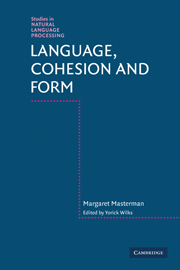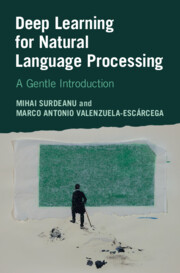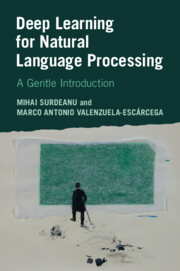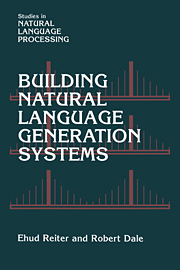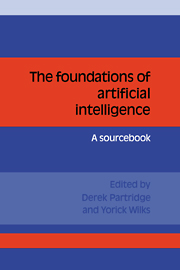Language, Cohesion and Form
As a pioneer in computational linguistics, working in the earliest days of language processing by computer, Margaret Masterman believed that meaning, not grammar, was the key to understanding languages, and that machines could determine the meaning of sentences. This volume brings together Masterman's groundbreaking papers for the first time, demonstrating the importance of her work in the philosophy of science and the nature of iconic languages. This book will be of key interest to students of computational linguistics and artificial intelligence.
- Makes available work that is now difficult or impossible to find in original sources
- Full commentaries on each paper by a leading computational linguist
- Brings to the forefront Margaret Masterman's pioneering work in an important technical field
Reviews & endorsements
Review of the hardback: 'we should be grateful to Wilks and the publisher for making these papers available.' Computational Linguistics
Product details
February 2010Paperback
9780521129633
324 pages
229 × 152 × 18 mm
0.48kg
Available
Table of Contents
- Introduction
- Part I. Basic Forms for Language Structure:
- 1. Words
- 2. Fans and heads
- 3. Classification, concept-formation and language
- Part II. The Thesaurus as a Tool for Machine Translation:
- 4. The potentialities of a mechanical thesaurus
- 5. What is a thesaurus?
- Part III. Experiments in Machine Translation:
- 6. 'Agricola in curvo terram dimovit aratro'
- 7. Mechanical pidgin translation
- 8. Translation
- Part IV. Phrasings, Breath Groups and Text Processing:
- 9. Commentary on the guberina hypothesis
- 10. Semantic algorithms
- Part V. Metaphor, Analogy and the Philosophy of Science:
- 11. Braithwaite and Kuhn: analogy-clusters within and without hypothetico-deductive systems in science
- Bibliography of the scientific works of Margaret Masterman
- Other references.

